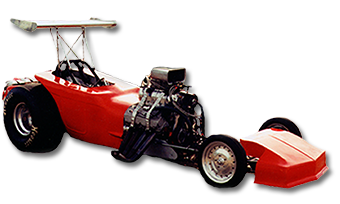A common trend in some motorsports classes that run mechanical fuel injection is to run a bigger replacement fuel pump than previously used. One common example is drag racing blown alcohol. For an engine combination making just above 2,000 horsepower, about 11 GPM of methanol fuel is needed at 8,000 RPM. Several fuel pump manufacturers have pump sizes that range around 12.5 GPM that were traditionally used for this power level. Further information about the proper amount of fuel to the engine with mechanical fuel injection is throughout our publications.
LARGER FUEL PUMP WITH PUMP SIZER
Many racers are now replacing these pumps with bigger pumps. Common sizes are 15 and 17 GPM pumps. These can be equipped with a fuel pump sizer (pump loop). That is an added fuel bypass usually connected at the fuel pump outlet, going back to the fuel tank or fuel line feeding the pump.
It is usually equipped with a jet restriction and a poppet.
That added bypass sizes down the fuel pump output, back to the needed value.
EXAMPLE
Examining one combination:
>> the setup with a 12.5 GPM pump supplies 11 GPM without a pump loop.
>> The same setup, with a 15 GPM pump and a 0.070 inch diameter pump loop jet supplies the same amount of fuel.
>> The same setup, with a 17 GPM pump and a 0.121 inch diameter pump loop jet supplies the same amount of fuel.
These setups were determined using our ProCalc fuel injection calculator and customer interaction.
All would make the same power level. All would be tuned with the same nozzles and main bypass jetting changes for air density changes. Spark plug readings would be the same.
PUMP LOOP POPPET
The purpose of the poppet is to force all the fuel to the engine during starting. Then it opens under pressure to reduce the fuel pump output to the engine. The poppet size should be a low pressure such as 5 psi.
EXCESS PUMP LOOP POPPET PRESSURE SETUPS
We saw setups with pump loop poppets up to 50 psi.
While this also works for starting assistance, the pump loop will not open until the fuel system gets to 50 psi. That can be as high as several thousand engine RPM. Operating the engine below that RPM becomes complex with that burden.
The engine is drunk rich until the pump loop opens.
